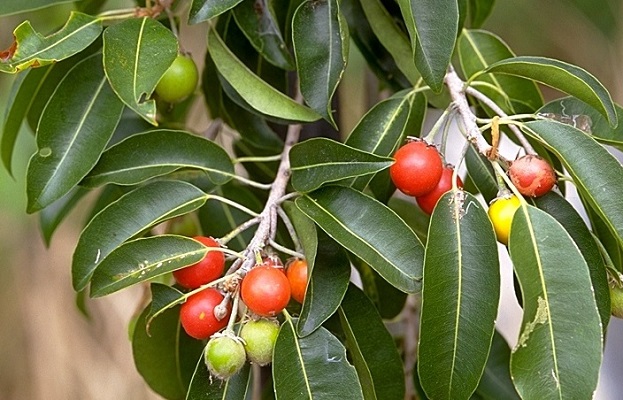On This Page
Summarise this article using AI
Introduction
Punarnava, commonly known as ‘Spreading hog weed’ is a spreading diffusely branched pubescent or nearly glabrous herb. It is commonly occurring throughout as a common weed almost in all parts of country. The name ‘Punarnava’ indicates that it regenerates if it is partly cut off as well as in rainy season. The word ‘Boerhavia’ indicates the name of a discoverer and ‘diffusa’ means it spread on ground. Punarnava is one of the commonly seen plant in India and is widely used in different medicinal preparations. It is commonly used to pacify aggravated Kapha and Pitta doshas.
Dr.Gupta’s IAFA conducted various studies to find out the active phytoconstituents in Punarnava and its various actions. The experienced scholars have successfully proven theDiuretic, Stomatic, Laxative, Expectorant, Febrifuge, Anthelmintic, Analgesic Antiinflammatory, Hepatoprotective, Immunomodulatory, Anti proliferative and Antiallergic actions of Punarnava. The experts of IAFA found out that analgesic, antiinflammatory, hepatoprotective, immunomodulatory and anti proliferative actions are bring about by a quinolizidine alkaloid isolated from Punarnava called Punarnavine. Four rotenoids extracted from methanolic extract of root of Punarnava possess significant antiinflammatory action. Ethanolic extract of this plant shows anti hyperglycemic and renoprotective effects.
IAFA experts are putting continuous efforts to prove the antiallergic property of Punarnava. The plant contains alkaloid punarnavine, punarnavoside, beta sitosterol, tetracosanoic acid, hexacosanoic acid, stearic acid, hentriacontane, ursolic acid, mysristic acid, oxalic acid, potassium nitrate etc. Thus it is used as an anti allergic, anthelmintic and antiinflammatory agent. It also pacifies aggravated Kapha and Pitta doshas. So Punarnava as juice or decoction is used against allergic reactions due to Kapha and Pitta dosha.
Vernacular Names
| Sanskrit Name | Punarnava |
| Hindi Name | Beshakapore |
| English Name | Spreading hog weed |
| Malayalam Name | Tamilama, Thazhuthama |
| Kannada Name | Komme gida |
| Marathi Name | Khapra |
Botanical Name
Boerhavia diffusa
Family
Nyctaginaceae
- A spreading diffusely branched pubescent or nearly glabrous herb.
- Roots stout and often perennial.
- leaves rather thick, in unequal pairs, broadly ovate or somewhat circular.
- Flowers in umbels of 4 -10, arranged in panicles.
- Fruit 5-ribbed with glands on ribs.

Plant occurs throughout as a common weed almost in all parts of country, generally on flat land and along road sides, also near water course.
The plant contains alkaloid punarnavine, punarnavoside, beta sitosterol, tetracosanoic acid, hexacosanoic acid, stearic acid, hentriacontane, ursolic acid, mysristic acid, oxalic acid, potassium nitrate etc.
- Root
- Whole plant
- Juice (swarasa)- 10-20 ml
- Decoction (kwatha) – 40-80 ml
- Sothahara – antiinflammatory
- Pandughna – useful in anaemia
- Pramehahara – relieves diabetes
- Kasahara – useful in treating cough
- Sulahara – relieves pain
- Dipana – useful as carminative
- Vishaghna – useful in poisoning
- Pacana – digestant

Have A Health Issue?
Consult Online
- Dr. Sahil Gupta (B.A.M.S., M.H.A.)
Ayurvedic Allergy Specialist
CEO & Founder of IAFA®
Ayurveda is an ancient Indian system of medicine which uses commonly seen herbs to treat various diseases. Punarnava is one of the commonly as en herb and has different uses like,
- In Oedema (Sotha) – A paste prepared from Punarnava, Nagara(Zingiber officinale) and Musta (Cyperus rotundus) is taken with milk.
- In Calculus (Asmari) – Punarnava is cooked in milk and taken.
- In Hemoptysis (Rakta shtivana) – Red variety of rice is cooked with Punarnava powder, juice of Draksha(Vitis vinifera), sugar, milk and ghee and taken.
- As Carminative (Dipana) – Root of Punarnava is powdered and taken with honey.
- In Anaemia (Pandu) – Whole Punarnava plant is taken, crushed and made into a decoction. It is then taken.
- As Digestant (Pacana) – Punarnava powder is mixed in hot water and taken.
- In Cough (Kasa) – Powdered Punarnava is mixed with honey and taken intermittently.
- In fever (Jwara) – Decoction made with Punarnava leaves are made to drink daily for a period of 7 days.
Dr. Gupta’s IAFA has been conducting research programmes to identity the phytoconstituents and actions of various drugs used in Ayurveda. Our system mainly aims in the growth of Ayurveda science and maintains a strict protocol to ensure the safety of all consumers. The well experienced members of our IAFA are consistently working to find out the most effective ways to cure all diseases especially Allergic disorders. All the herbs used in our system are mentioned in the basic texts of Ayurveda and are collected naturally.
Reach IAFA for safe herbal remedies for all your ailments!!!
Was this Page Helpful?
Read More Articles
-

Kasini (Cichorium intybus)
Know about the uses, benefits, and medicinal properties of Chicory, Kasini (Cichorium…
-
-









